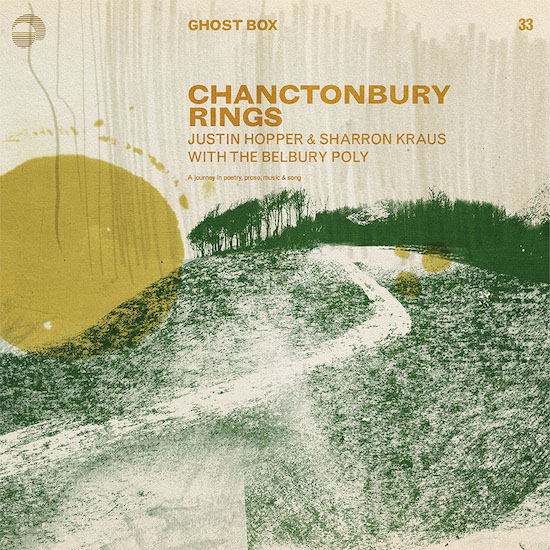Chanctonbury Rings begins with a declaration: “Time had gone soft at the crossroads… and let me tell you how.” Justin Hopper’s book, Old Weird Albion (published in 2017 by Penned in the Margins) mapped personal identity across the deep-worn trackways of the South Downs. The trail leads to the myth-shrouded Chanctonbury Rings hillfort on the chalk ridge above Steyning, in Sussex, slipping through a thin curtain between past and present.
The book has now become a powerful album of spoken word and music, with Sharron Kraus and fellow Ghost Box artist Belbury Poly. The latter (label co-founder Jim Jupp) is a familiar presence, but his haunted 1970s synths take on new meanings teamed with Kraus’ multi-layered folk contributions and Hopper’s distinctive, Pittsburgh narration.
The stories of Chanctonbury, as intoned by Hopper, are both ancient and current – and exist together in layers of time. Origin myths (‘The Devil and St. Dunstan’) and 800-year old monk murders are mixed, in this “thinnest of places”, with his own childhood and adult experiences on the Downs, including a meeting with his grandmother Winnie, long dead but standing before him again dressed in “the thin beige windbreaker ubiquitous to 80s England“. Brought up in the US but with regular visits to Sussex, Hopper’s relationship with his English grandmother is the album’s centre. He encounters the chalk landscape and the mysterious, tree-crowned Ring through her folk tales.
The brief track ‘On The Downs’ channels William Burroughs in a nod to US spoken word recordings, from Jack Kerouac to Caroline Bergvall, that clearly influence Hopper. It is both funny and neatly delivered and it is the US/UK crossover that gives the album a different, unexpected edge. Hopper, brings the beatnik tradition from his hometown into conversation with less hip but equally influential BBC radio drama traditions. Both Tom Waits and Hitchhiker’s Guide to the Galaxy can be detected in his balanced, dramatic and engrossing narration, as can Alan Moore’s narrative outpourings on albums such as ‘The Highbury Working’.
The album is equal parts speech, music, and sound installation, drenched in the soaking mists of the high downs, and Kraus’ music is crucial to its success. While Belbury Poly brings the reassuring sounds – at least to an English audience of a certain age – of pre-internet electronic culture, Kraus’ undermines expectations. Sometimes she sounds like Sussex mage Shirley Collins, performing with her sister Dolly, and the album includes a snatch of the traditional song ‘Hal-an-Tow’, associated with Collins. Elsewhere, strange distorted pipes play, a ghostly Morris dance hops, an accordion groans and dark synths coming rolling in like a weather front.
The unlikely combination of Hopper, Kraus, and Belbury Poly produces an album layered with memories of landscape and memories of sound. It is a completely immersive experience – it is impossible to skip a track – and a fine achievement. Chanctonbury Rings is destined to become loved like the classic spoken word productions that so influence its performers.


